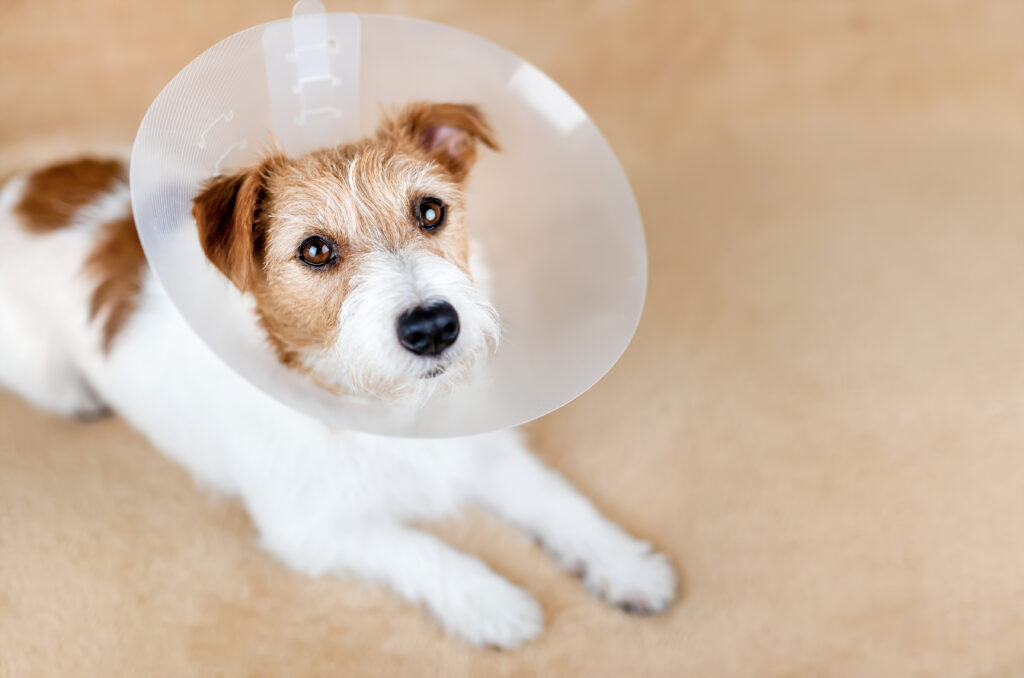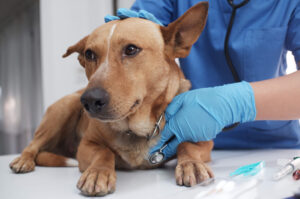A dog spay is a routine but still major surgical procedure. For some dogs who undergo this surgery, minor bleeding might occur afterward. This is not unusual, but we can certainly understand why, as a pet owner, you might be alarmed and a little bit concerned. We’ll address post-surgical bleeding in dogs, what it means, and when it might warrant urgent medical attention. We encourage follow-ups and staying in contact after surgery to make sure our patients are healing comfortably. If you have any questions about your pet’s health or post-surgical care, contact Loveland Regional Animal Hospital at (513) 697-9796 so we can help!
What Does Spaying Involve?
Spaying, or ovariohysterectomy, is a surgical procedure in which a female dog’s ovaries and uterus are both removed. It’s a routine surgery and is done for various reasons, chiefly to prevent pregnancy but also to provide health benefits and ensure population control. Understanding the nature of this procedure can help you better understand why some post-op bleeding might happen.
Post-Surgical Bleeding: What’s Normal and What’s Not
After surgery, it’s normal for a dog to experience some minor bleeding. However, if the bleeding seems excessive or continues for more than a few days, it might be a sign of a problem. It’s essential to monitor the amount and duration of the bleeding. Take notes and pictures if necessary to share with your vet. It’s always best to reach out to your vet if you’re unsure about your pet’s condition and safety.
Possible Causes of Bleeding After Spaying
Several issues could cause your dog to bleed after they’ve been spayed. These might include complications from the surgery, like a reaction to sutures or an infection. It’s also possible that your dog could be in heat if the surgery coincided with their heat cycle. Each of these situations requires different approaches, and our team can help determine the best course of action.
Infections: Symptoms and Treatment
Infections can occur after any surgical procedure, including spaying. Signs of infection may include redness, swelling, pus, or excessive bleeding at the surgery site. If you suspect an infection, contact us immediately. Treatment may involve antibiotics or additional care, depending on the severity.
Physical Activity and Bleeding
Too much physical activity after surgery can also lead to bleeding. It’s important to ensure your dog rests and heals properly after their procedure. Avoid strenuous activities like running or jumping for at least two weeks. If your dog is very active and bleeding occurs, it’s important to reduce their activity level and consult with us for further advice.
Surgical Complications
While rare, surgical complications may occur. This can range from reactions to anesthesia to issues with the sutures. If you notice anything unusual with your dog, including excessive bleeding, pain, or lethargy, please call us at Loveland Regional Animal Hospital. It’s always better to be safe and get these concerns checked out!
The Importance of Follow-Up Appointments
Finally, don’t forget the importance of follow-up appointments. These appointments allow us to check on your dog’s recovery, assess their incision site, answer your questions, and address any issues your pet might have. Follow-up appointments are an essential part of ensuring your dog’s health and recovery after being spayed.
At Loveland Regional Animal Hospital, we’re here to support you and your dog through their recovery process. Our team is skilled in post-surgical care and can provide the necessary guidance and treatment. If you have any concerns, please give us a call at (513) 697-9796.





